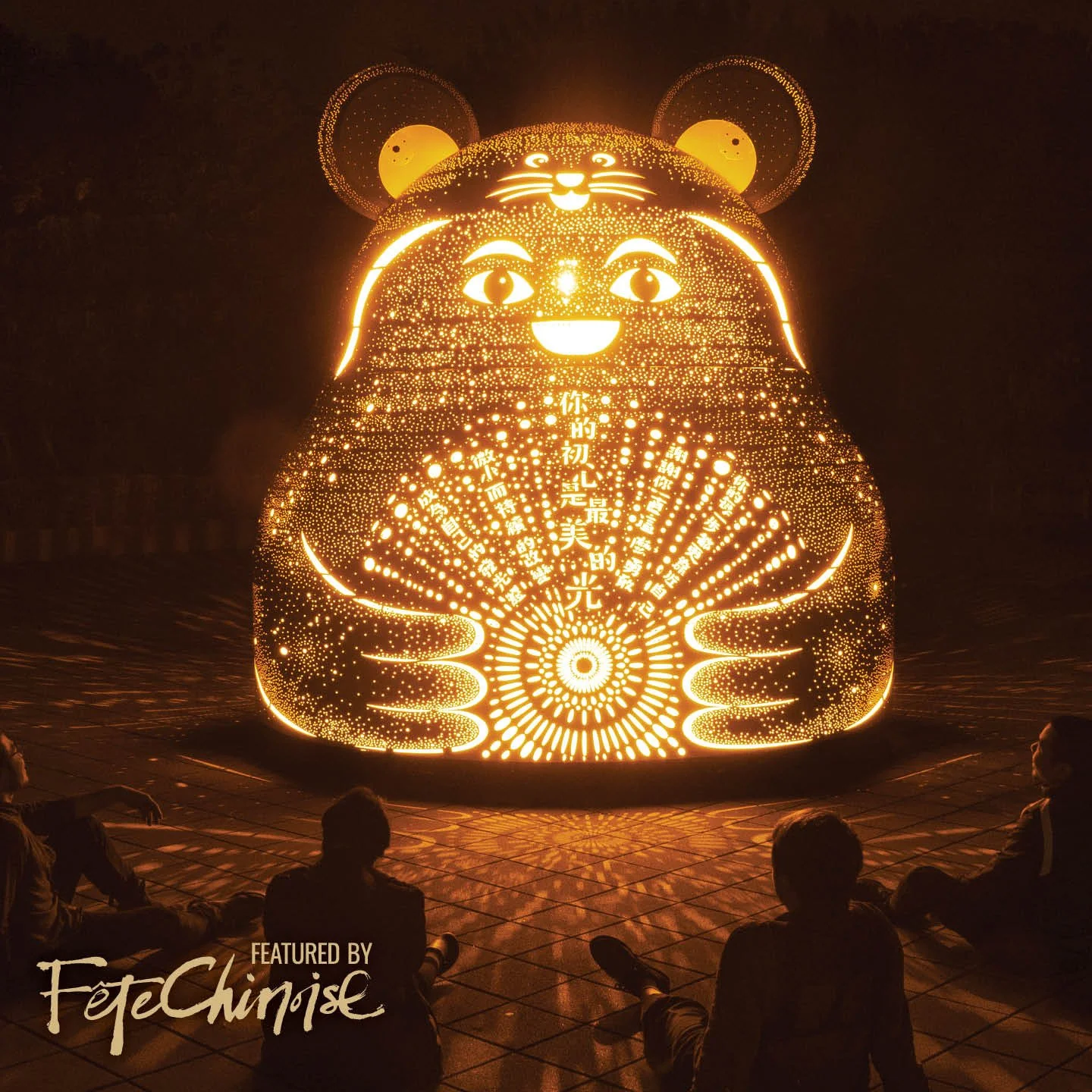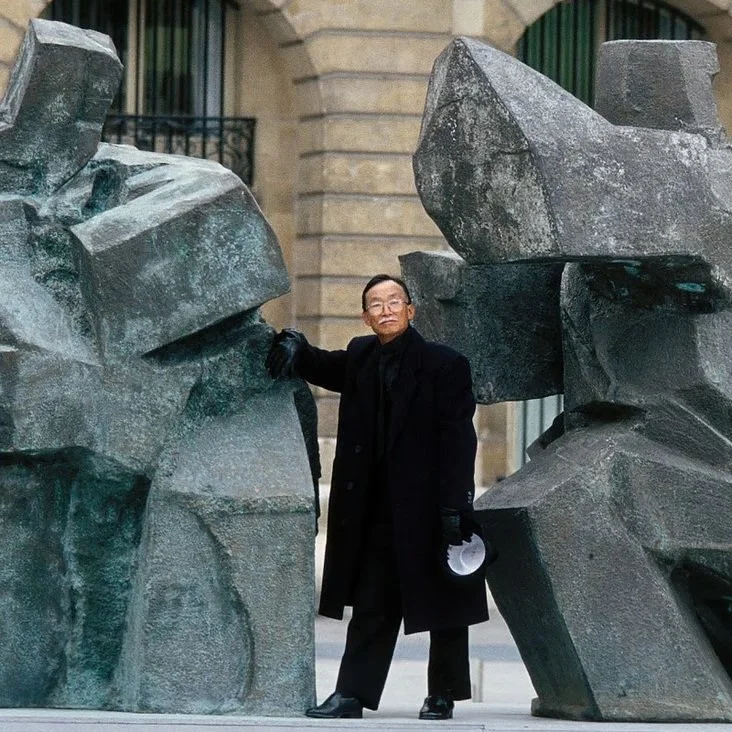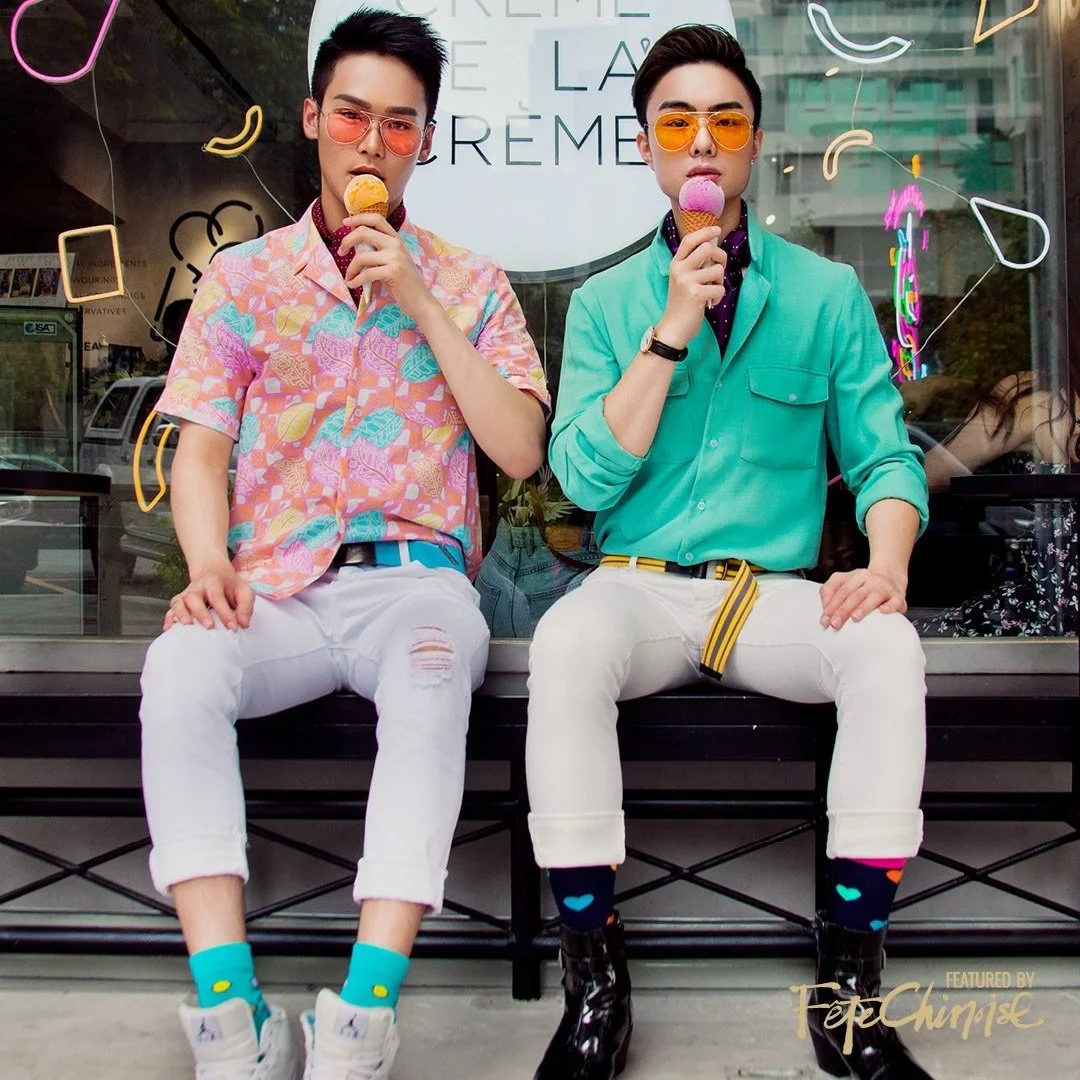Fête Artist Feature: A Time to Look Deep by Nicky Wang
Written by Nicky Wang
Interviewed and Translated by Jennifer J. Lau
Gala Photography by IKONICA
Fete Chinoise 2020: Dreams Take Flight. Artist Installation by Nicky Wang and Vivi Hou. Photo Courtesy of IKONICA.
ABOUT NICKY WANG
I immigrated to Toronto from Shenyang with my parents in 2003. My father was a university professor in architectural material studies and my mom was an engineer. My childhood consisted of being enrolled in the Lu Xun Academy of Fine Arts to learn the foundation of painting under the encouragement of my mom. Although I did not know at the time, this was the starting point for my interest in art and design. When I arrived in Canada, I struggled like many foreign-born students to adapt to the culture and I missed home very much.
有人曾說人的命運是一張單程車票,有些人坐的是從A站直達B站的直通車,但也有的人是必須要在中間轉車甚至步行才能到達目的地。相比前者,後者總是要付出更多的時間與汗水,但這也讓他們的人生多了些精彩與感悟。而在通往藝術理想的道路上,我似乎恰恰就是這樣的一個必須不斷在命運中轉車,不斷探索的人。
Nicky Wang. Photo Courtesy of Nicky Wang.
Everything changed with good educators I met in Toronto. The first was my art teacher Ms. M. Bercovich (Curriculum Leader of Visual Arts at the York Mills Collegiate Institute). With her encouragement and help, I quickly found my long-lost joy and confidence in the art studio and realized that my goal was to enter OCAD (Ontario College of Art and Design). I was happy to be accepted into OCAD and I became acquainted with the Chair of Graphic Design, Roderick Grant, who would be the second educator to influence my work and my life. A scholar of zen teachings, Grant made me understand that the meaning and value of art and design should not be limited to itself. Any artwork is a phase of the creator’s perception of the world. As an artist, one should continue to extend one’s thinking through the work to influence others and the world. As a student I couldn’t fully appreciate this idea but after graduation, I held a variety of life experiences (such as work, marriage, fertility, and entrepreneurship) and this idea became clearer and clearer each day.
我出生於中國東北的瀋陽市。父親是一名大學建築專業的教授,母親是一名工程師。可以說在我12歲來到多倫多之前,我的童年都是在大學校園的象牙塔中度過的。在這樣的一個環境中,母親在我還沒有畫板高的年紀就讓我去了魯迅美術學院開設的兒童學習班學習繪畫基礎。雖然那時一切都是有趣而懵懂的,但我想這也是我後來從事藝術和設計相關工作的基礎和起點。
2003年我隨著父母移民至多倫多,我早期的中學生活一直掙扎於對不同文化的適應和對故鄉的思念,直到我遇到了我的美術老師Ms. M. Bercovich (Curriculum Leader of Visual Arts at the York Mills Collegiate Institute),在她的鼓勵和幫助下,我很快在畫室中找到了久違的快樂和自信,並且找到了自己的大學升學目標OCAD。
如果說一個人的努力和堅持總會換來些許的運氣,在我到了OCAD的第二年,我結識了影響了我對後來藝術與人生的導師Roderick Grant (Chair of Graphic Design in OCAD), 一位崇尚Zen Living 的學者和修行者。他讓我了解和意識到了藝術與設計的意義與價值不應僅僅限於其本身,任何的藝術品不過是一個創作者對世界認知的階段性分享。而作為作者本身應該不斷順著作品延申自己的思維並影響他人和世界。其實作為學生階段的我並沒有機會真正體會這些思想,反而是畢業多年後在經歷了工作,婚姻,生育,創業等多種人生體驗後,這個概念才被我更清晰的感悟到。
After graduating, like most Asian students, I found a profession that my parents approved of and I took home a fair salary. But as time went by, I forgot about my identity as an artist and the way of thinking I should have. So on Christmas of 2014, I resigned and decided to establish an architecture firm with my husband named 3R1 Design Inc. Although the establishment of the company has given me freedom in how I spend my time, it also adds to life’s pressures. I am always trying to find the balance between family and work. As a perfectionist, I had to face self-doubts many times. I found that these doubts could not be overcome by any “success” that people see in reality. Soonafter, I reignited my passion for art and finally found the peace and freedom I was searching for in art. In the future, I hope that my work can be therapeutic and heal those who engage with it. This is aligned to the message of the art piece I designed for Fête Chinoise 2020, named Square Circle Pavilion — we should learn to love every experience we have, even if it is not perfect, so that we can gain confidence from the inside out.
我畢業後和絕大多數亞裔學生一樣,在父母的期待下找到了自己的專業對口的工作,拿著一份不錯的收入。但日復一日的標準化生活讓我似乎忘記了身為一名藝術者應該有的思維模式。於是在2014年的聖誕節,我辭職與從事建築設計工作的先生一起成立了3R1 Design Inc,致力於多倫多本地的設計與建築業務。公司的成立雖然給予了我時間上的自由,同時也給予了我生活上的壓力,特別是有了自己的孩子之後,家庭與工作似乎始終成為難以平衡的一個心結。作為一個事事追求完美的偏執者,如何面對自己對自己的質疑幾乎成了每個孤獨時刻的問題。
漸漸我發現心理上的疑惑並不能通過現實的所謂成功得到答案。直到後來的一天,我開始重拾自己對藝術的熱情,發覺自己在藝術創作中可以獲得久違的平靜與自由。因此在未來的日子裡,我希望過創作一些具備心靈療愈功能的藝術品或空間藝術展示,與更多的人分享。正如方圓亭的創作初衷,我們應該學會愛自己的每一個經歷,即使那並不完美,但卻完整,這樣才會獲得由內而外的自信。
Fete Chinoise 2020: Dreams Take Flight. Artist Installation by Nicky Wang and Vivi Hou. Photo Courtesy of IKONICA.
DESCRIPTION OF WORK 作品概述:
This piece was inspired by the concept of Chinese Yin Yang theory stemming from the ideas of the universe and earth. I wanted to express the connections between humanity and the universe. In our lives, we will constantly experience things we can and cannot change. Every experience establishes who we are. Thus the piece has three “levels” with each representing a level of humanity.
該作品名稱為“方圓亭”,顧名思義源於中國陰陽學精髓- 天園地方。代表了古人對世間萬物和自身的關係的認知。圓如同環繞地球的日月星辰代表著運動,而平坦的大地相對於天空則代表著靜止。無論是世界還是人生,都會面臨著瞬息萬變或經久不變的事物與情感。無論人的一生中經歷了什麼,你的人生髮生了何等的變化,我們都會接受並欣賞,這些過往經歷。無論痛苦歡樂,美麗醜陋,都是組成我們人生的一部分。
The first level is the outer structure. It is the frame of the artwork and also the first thing viewers see. The outer structure is like the form of a human body – the outward appearance that can hide all the emotions within. At the corners of the outer structure, popular Chinese traditional stories are illustrated through paper sculptures.
These stories are “Magpie Bridge” (symbolizing love in a Chinese ancient fairytale); “Water Margin” (on bravery); “Mencius’s Mother Moved Three Times” (a story that shows the deep love of parents for their offspring); and “Oath of the Peach Garden” (a story symbolizing friendship). These stories have been collected in Chinese textbooks, memorized by elder members in family, and passed down in Chinese society for many generations. They are the common values that people shared.
此設計分為外,中,內三個層次,象徵著人性心態的三個層次。第一個層次是外部結構,也就是建築的框架。這是人們首先接觸到最為醒目的部分。他猶如人的身體軀殼,支撐並包含了人的一切內容與情緒。在最外層的四個角落懸掛著象徵著愛情的“鵲橋會“,象徵著勇氣的”景陽岡“,象徵著父母慈愛的”孟母三遷“,以及象徵友情的”桃園結義“的紙藝雕塑。這些情感內容是人類出生以來一直被教育和影響的,無論我們是否認同,在同樣的教育環境中我們幾乎收到相似或相同的價值觀教育。這也造成了人性之中的共性。
The second level of the artwork is created by a series of hanging threads of twisting calligraphy on paper. These threads represent the walls we build inside of us that we use to cover our real and true thoughts. The calligraphy on the threads symbolize the impact of reality of our psychology as time goes by. We have thoughts that are deeply hidden which hinders us from bing honest with others and open to expressing ourselves.
中間的一層是由垂下的絲線與寫滿漢字扭曲的字條,絲線如同一個人的心網,遮擋住一個人內心真實的自己,部分寫滿字的字條則表示,人的內心隨著年齡的增長,會有更多來自外界的內容影響著內心的深處,而這些也是阻擋著人們坦誠相待,吐露心扉變得困難。
The third level represents our true selves. When you stand in the centre of the pavilion, you become part of the artwork. You will see the threads and the frame and see the different layers in front of you. And when you look up, you will see your own reflection in the fragmented mirror above. The broken mirror symbolizes the imperfect world —even though the world and humanity s not perfect, you must stay true to yourself. My hopes as an artist is that my audience can accept who they are, and love themselves, and believe in themselves.
最內部的一層象徵人們真正的自我,當人們來到這個亭子的中心,會發現只有自我才了解最真實的自我。當我們反向環顧四周,透過絲線,透過花窗,我們會獲得不同的審視自己的角度。當人們抬頭,會從破碎的鏡子碎片看到自己的倒影。破碎的鏡子正是像徵著真實的自我,希望表達出無論好與壞,即使成長後的我們不像出生時那麼完美,但卻是最真實的自我,我們接受這樣一個成長了並不完美的我們,我們才能更好的愛自己,發自內心的相信自己。















